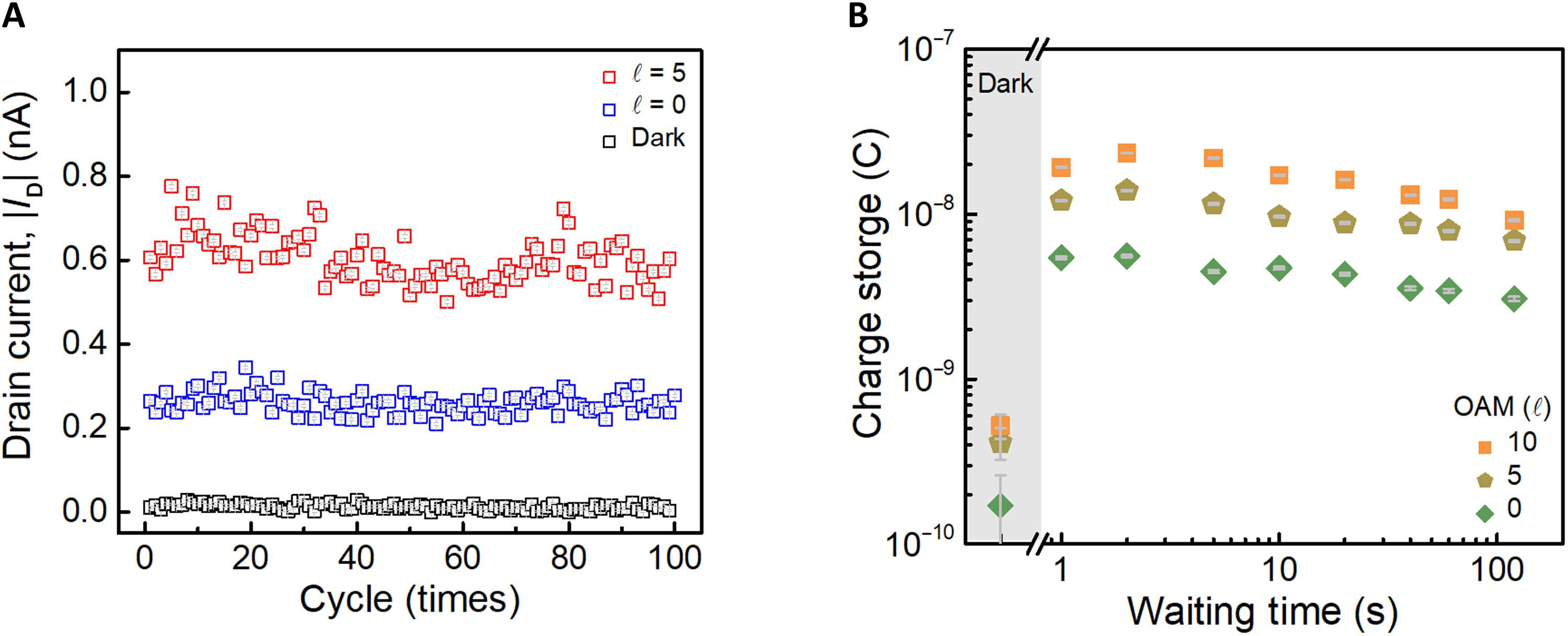Orbital angular momentum–driven multistate photomemory
IF 12.5
1区 综合性期刊
Q1 MULTIDISCIPLINARY SCIENCES
引用次数: 0
Abstract
Current optical memory technologies face critical challenges, including limited precision in multistate control, energy inefficiency, and inadequate adaptability across diverse material platforms. To directly address these issues, this study introduces a noncontact approach by exploiting the unique properties of the orbital angular momentum (OAM) of light. The distinctive longitudinal electric field generated by OAM light substantially enhances the density of trap states in materials such as molybdenum disulfide, as the primary material for investigation, and others as supplementary examples. This enhancement enables precise modulation of key device characteristics, including readout current, hysteresis window, and charge storage capacity, with quantitative behavior accurately modeled by the Poole-Frenkel effect. Our results reveal the transformative potential of OAM light in enabling multilevel memory states with exceptional tunability and versatility across different material systems. This work underscores the viability of OAM-driven memory as a platform for the next generation of highly functional, optically responsive memory devices.

轨道角动量驱动的多态光存储器
当前的光存储技术面临着严峻的挑战,包括多状态控制精度有限、能源效率低下以及对不同材料平台的适应性不足。为了直接解决这些问题,本研究通过利用光的轨道角动量(OAM)的独特性质,引入了一种非接触方法。OAM光产生的独特的纵向电场大大增强了材料中的陷阱态密度,例如作为主要研究材料的二硫化钼,以及作为补充例子的其他材料。这种增强功能可以精确调制关键器件特性,包括读出电流、滞后窗口和电荷存储容量,并通过Poole-Frenkel效应精确模拟定量行为。我们的研究结果揭示了OAM光在实现跨不同材料系统具有卓越可调性和多功能性的多层记忆状态方面的变革潜力。这项工作强调了oam驱动存储器作为下一代高功能、光响应存储器设备平台的可行性。
本文章由计算机程序翻译,如有差异,请以英文原文为准。
求助全文
约1分钟内获得全文
求助全文
来源期刊

Science Advances
综合性期刊-综合性期刊
CiteScore
21.40
自引率
1.50%
发文量
1937
审稿时长
29 weeks
期刊介绍:
Science Advances, an open-access journal by AAAS, publishes impactful research in diverse scientific areas. It aims for fair, fast, and expert peer review, providing freely accessible research to readers. Led by distinguished scientists, the journal supports AAAS's mission by extending Science magazine's capacity to identify and promote significant advances. Evolving digital publishing technologies play a crucial role in advancing AAAS's global mission for science communication and benefitting humankind.
 求助内容:
求助内容: 应助结果提醒方式:
应助结果提醒方式:


